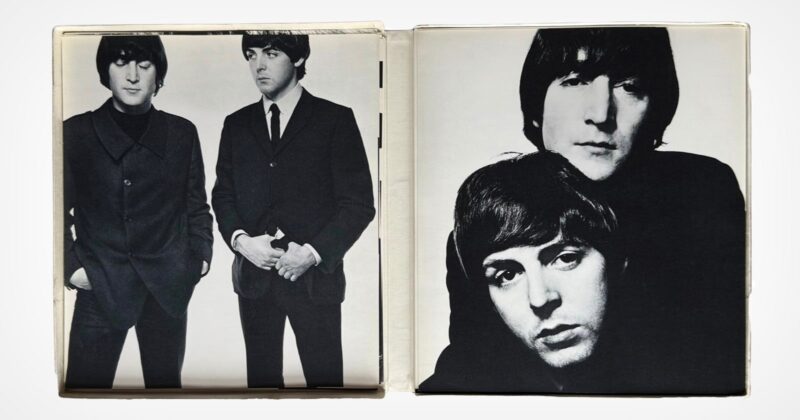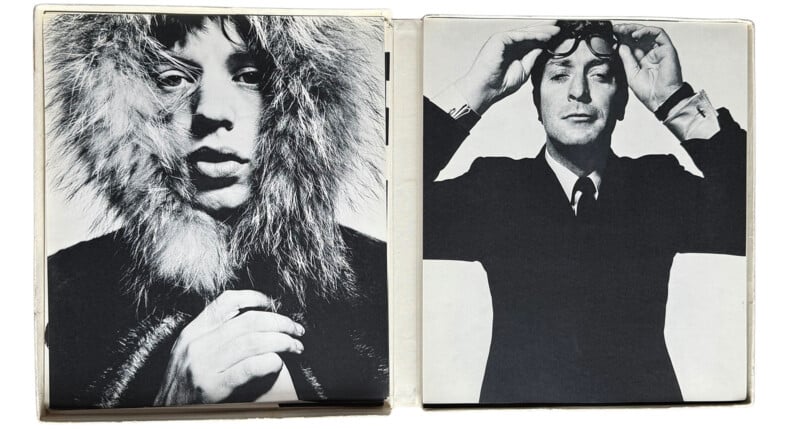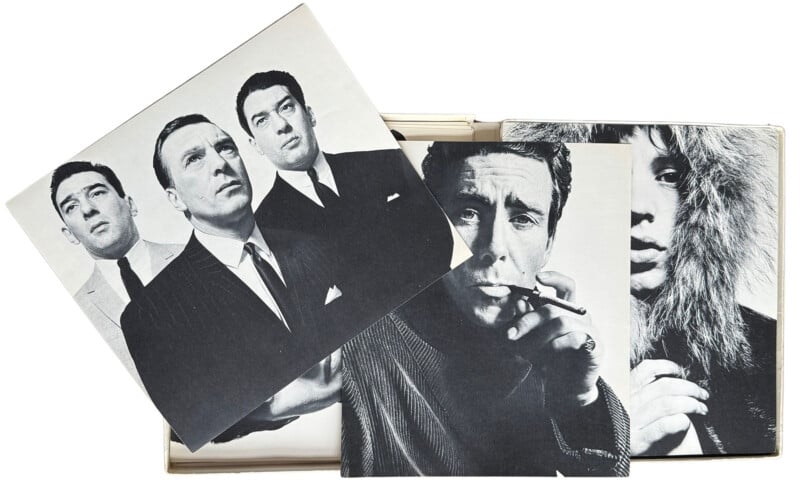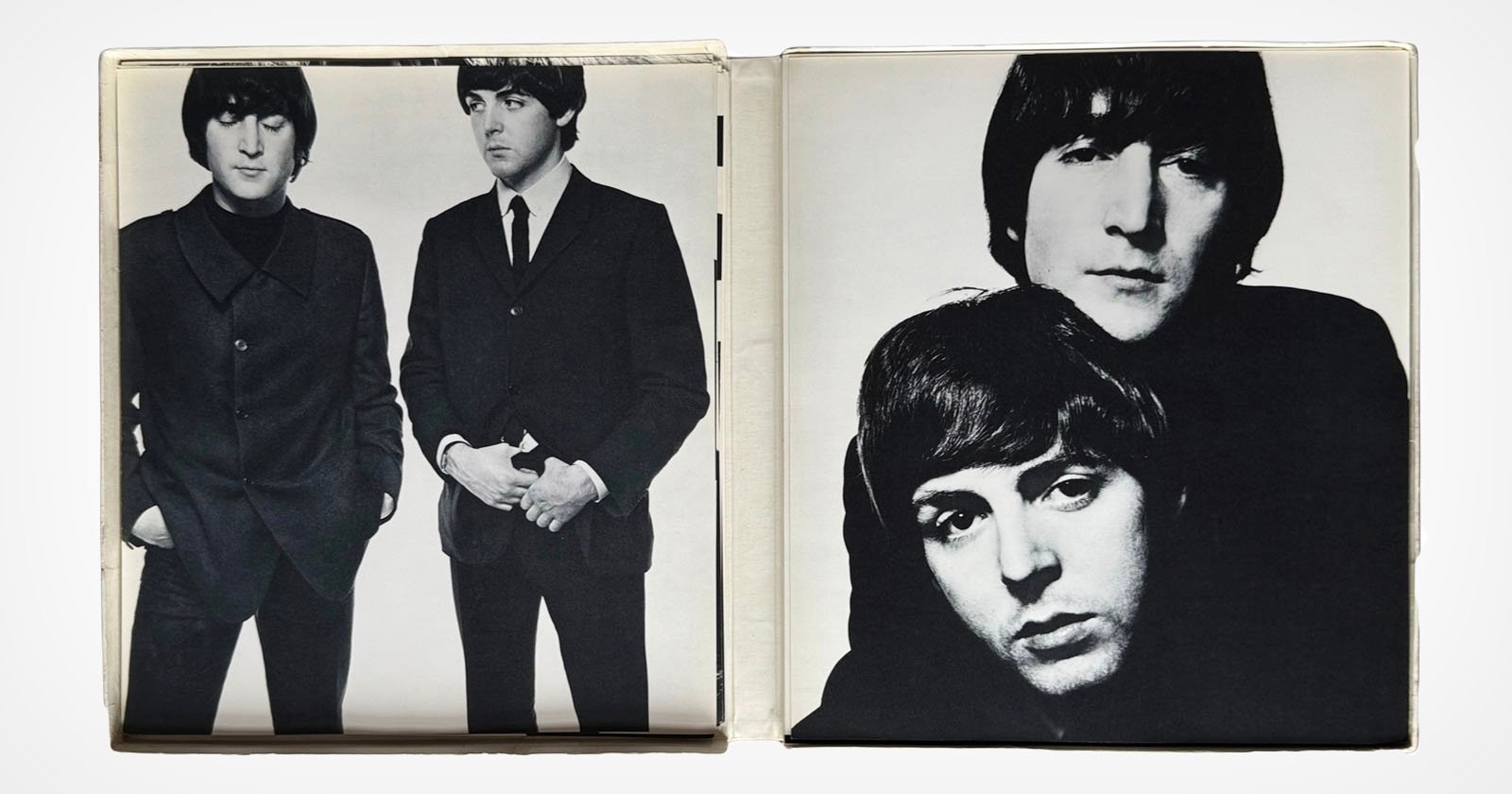 Paul McCartney and John Lennon from Bailey’s portfolio.
Paul McCartney and John Lennon from Bailey’s portfolio.
A rare portfolio belonging to iconic British fashion photographer David Bailey has been discovered in the personal collection of a graphic designer who worked with Bailey.
Box of Pin-Ups (1964) is arguably Bailey’s most famous collection of photographs, which captured Swinging London, including Mick Jagger, The Beatles, Jean Shrimpton, David Hockney, and many more. The photos are simple in nature — almost all of them shot on a plain white background — but characterized by intriguing poses that capture the energy and optimism of the era.
 Mick Jagger and Michael Caine.
Mick Jagger and Michael Caine.
The Guardian reports that the portfolio — a proof copy — was found in the possession of David Hillman, the designer who helped create Box of Pin-Ups. It is a box portfolio containing 36 prints that are in “near-mint condition.” Its existence was previously unknown.
“Mark, a friend of David Bailey’s, came up with the idea for a box of pin-ups — an idea Bailey was enthusiastic about,” Hillman writes in a letter that confirms the authenticity of the portfolio. “Bailey selected the photographs, and Mark tasked me with designing and managing the project under his direction.”
 The proof copy was on sale for $33,500 (£25,000).
The proof copy was on sale for $33,500 (£25,000).
Controversy
Box of Pin-Ups was published in 1965 and was a great success, marking a shift in how photographers could sell their work. However, neither a U.S. edition or a second edition was ever released, and this was in part due to the inclusion of Ronnie and Reggie Kray, two notorious London gangsters.
 The Kray Twins, Lord Snowdon (who objected to the Kray Twins’ inclusion), and Jagger.
The Kray Twins, Lord Snowdon (who objected to the Kray Twins’ inclusion), and Jagger.
Immortalized in the film Legend (2015), in which both Ronnie and Reggie were played by actor Tom Hardy, the Krays’ presence in the collection was strongly objected to by Lord Snowdon, a fellow photographer and member of the aristocracy who dated Princess Margaret.
“While the controversy tarnished the project’s reception in some circles, it paradoxically amplified its allure in others, cementing its rebellious edge,” Oliver Bayliss of Bayliss Rare Books tells The Guardian.
Bayliss says the portfolio is an “incredibly rare item” and that proof copies such as this one are much sought after in his trade.
“What makes it so fascinating is that this isn’t just a production copy or a variant. It is the prototype — the moment Bailey’s concept became a finished object. And it comes from Hillman, one of the great British designers of the postwar period, whose role in shaping this work has often been overshadowed by the fame of the images themselves,” he says.
Bayliss Rare Books is managing the sale.
Image credits: Photographs by David Bailey. Courtesy of Bayliss Rare Books.

